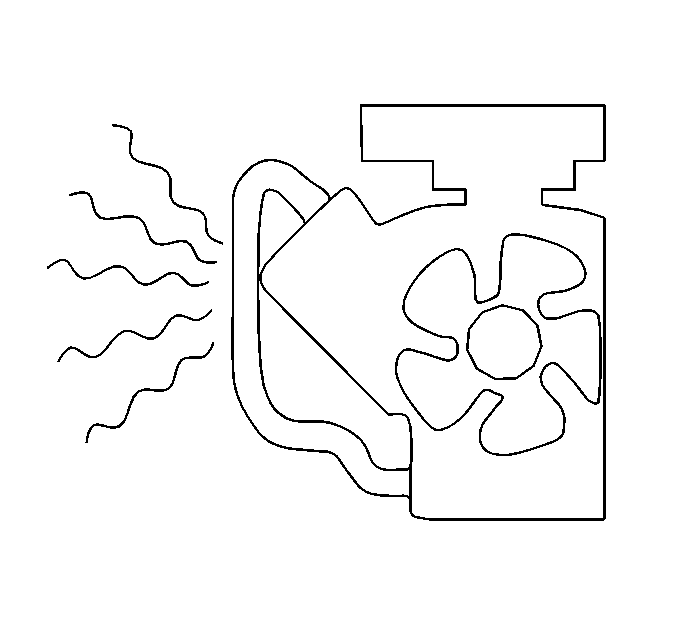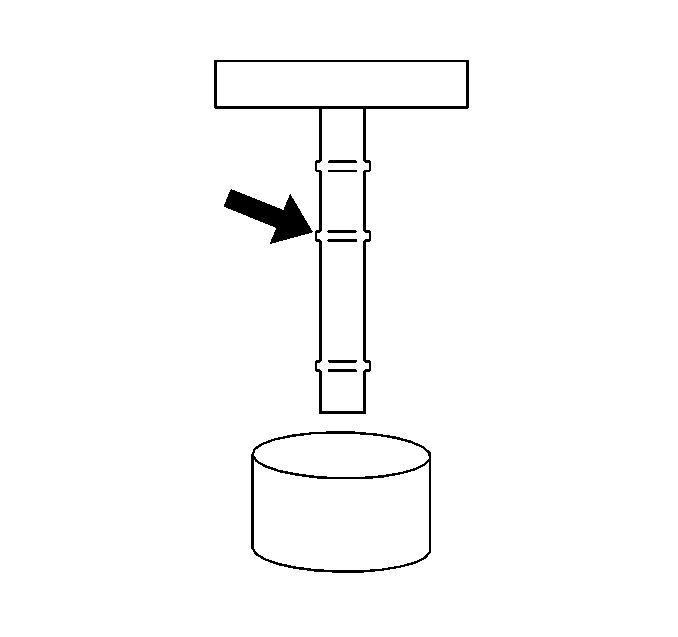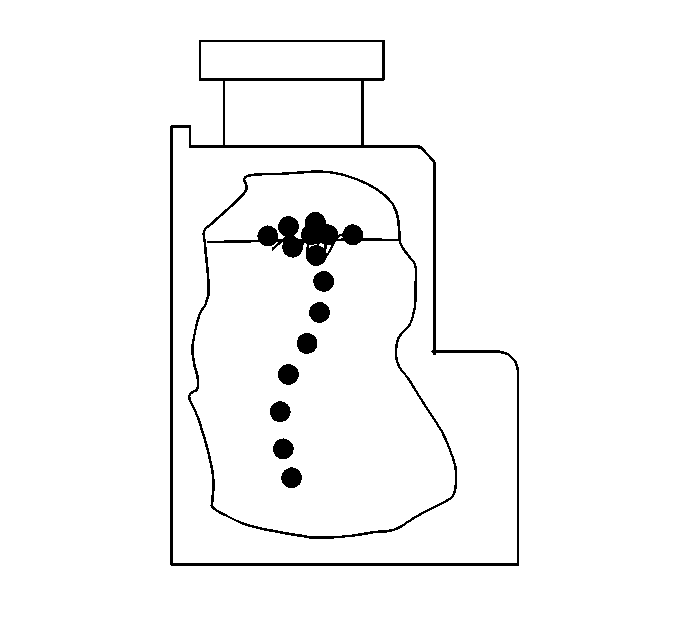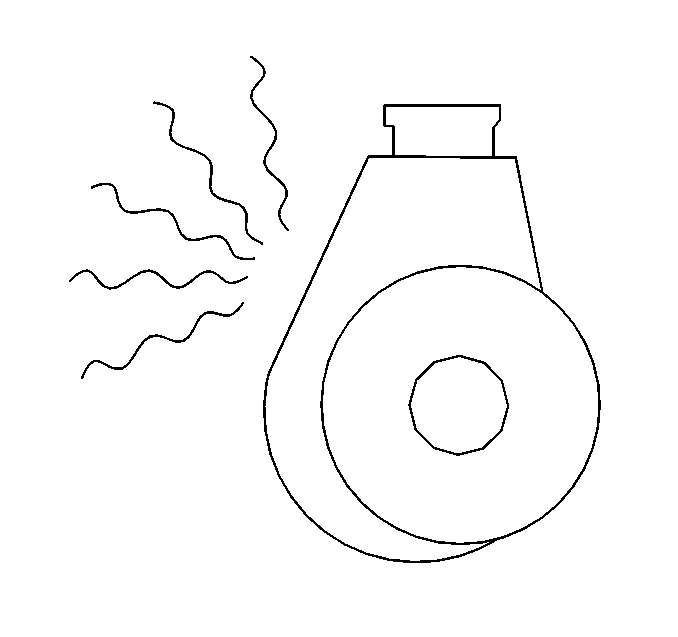Prior to Bleeding the Power Steering System
Important: When bleeding the air from the power steering system, use only clean,
new power steering fluid.
- Bleed the power steering system under the following conditions:
| • | After replacing any component |
| • | After disconnecting the fluid line |
| • | To correct steering system noise |
- Bleed the power steering system to prevent the following conditions:
| • | Improper system operation |

- Inspect the power steering
system prior to bleeding it. Verify that the following conditions apply:
| • | The power steering hoses are not touching any other part of the
vehicle. |
| • | The hose connections are tight. |
| • | The steering system noise is not caused by a hose touching the
frame, the body, or the engine. |
| • | Loose connections are not allowing air into the system. |
Bleeding the Power Steering System
- Turn OFF the engine.

- Raise the front wheels off of the ground.
- Turn the steering wheel fully to the left.

- Fill the fluid reservoir
to the FULL/COLD level.
Leave the cap off.
- Leave the engine OFF.
With an assistant checking the level and the condition of the power
steering fluid, turn the steering wheel fully to the left and fully to the
right at least 20 times.
| • | On systems with long return lines or fluid coolers, turn the steering
wheel fully to the left and fully to the right at least 40 times. |
| • | Trapped air may cause the fluid to overflow. Thoroughly clean
any spilled fluid to allow for a leak check. |
| • | Keep the fluid level at FULL/COLD. |
- Check the fluid constantly while turning the wheel.
| • | Ensure that there are no bubbles in the fluid. |
| • | If there are any bubbles in the fluid, recheck all of the connections,
then repeat Step 5. |
- Turn ON the engine.
| 7.1. | With the engine idling, maintain the fluid level. |

- Center the wheels.
- Lower the front wheels to the ground.
- Keep the engine running for 2 minutes.
- Turn the steering wheel in both directions. Verify that the following
conditions apply:
| • | Absence of system leaks |
| • | Absence of fluid discoloration |
| • | The procedure is complete if the system passes the inspection. If problems
remain, see Special Conditions, below. |
Special Conditions
If problems still exist after completing the above procedure, proceed
as follows:

- Ensure that the power
steering fluid is completely free of bubbles. Periodic bubbles found during
Step 5 above may indicate one of the following conditions:
| • | A loose connection in either the return hose or the pressure hose. |
| • | A leaky O-ring seal in either the return hose or the pressure
hose. |
- Inspect the power steering fluid for discoloration. If the fluid
is milky, opaque, or tan in color, perform the following procedure:
| 2.1. | Turn OFF the engine. |
| 2.3. | Repeat steps 7 through 10 above. |
| 2.4. | If the condition persists, inspect each of the following components,
replace any that are defective: |
| • | The return hose O-rings |
| • | The pressure hose O-rings |
| • | The gear cylinder line O-rings |
| 2.5. | After replacing any suspect components, repeat Steps 7 through
10 above in order to verify that the condition has been corrected. |

- Inspect for any whining
or groaning noise in the power steering pump. If noise persists, turn ON
the engine and recheck the hoses for possible contact with the
frame body or the engine. If there is no contact, follow either
method below in order to cool down the fluid and repressurize the
engine.
Method 1 -- Normal Cool Down
Employ the following method for normal engine cool-down:
- Turn OFF the engine.
- Wait for the system to cool.
- Install the reservoir cap.
Method 2 -- Partial Fluid Replacement
The engine can also be cooled by partially replacing the fluid in the
reservoir. Proceed as follows:
- Turn OFF the engine.
- Use a suction device in order to remove fluid from the reservoir.
- Refill the reservoir with cool, clean fluid.
- Install the reservoir cap.
After either method of cooling, turn ON the engine and allow the engine
to reach the normal operating temperature. If the noise persists, remove and
replace the power steering pump. Repeat the bleeding
procedure following the pump replacement.






